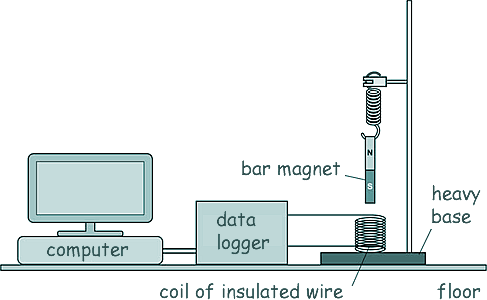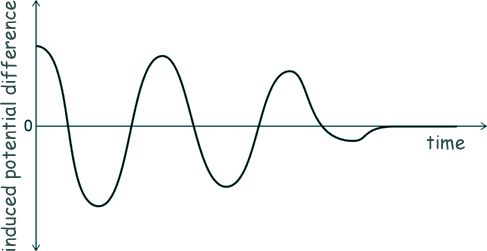GCSE Questions - Geophysics
Q1. P-waves and S-waves are two types of seismic wave caused by earthquakes.
(a) Which one of the statements about P-waves and S-waves is correct? Tick one box.
Statement |
Tick here |
| P-waves and S-waves are transverse. |
|
| P-waves and S-waves are longitudinal. |
|
| P-waves are transverse and S-waves are longitudinal. |
|
| P-waves are longitudinal and S-waves are transverse. |
|
[1 mark]
(b) Seismometers on the Earth's surface record the vibrations caused by seismic waves.
The diagram shows the vibration recorded by a seismometer for one P-wave.

(i) Calculate the frequency of the P-wave shown above
[4 marks]
(ii) Write down the equation which links frequency, wavelength and wave speed.
[1 mark]
(iii) The P-wave shown above is travelling at 7200 m/s.
Calculate the wavelength of the P-wave.
[3 marks]
(c) Explain why the study of seismic waves provides evidence for the structure of the Earth's core.
[2 marks]
(d) The diagram shows a simple seismometer made by a student.

To test that the seismometer works, the student pushes the bar magnet into the coil and then releases the bar magnet.
(i) Why does the movement of the bar magnet induce a potential difference across the coil?
[2 marks]
(ii) Why is the induced potential difference across the coil alternating?
[1 mark]
(iii) The sketch graph shows how the potential difference induced across the coil varies after the bar magnet has been released.

Which statement in the table below describes the movement of the magnet when the induced potential difference is zero? Tick one box.
| Statement |
Tick here |
| Accelerating upwards. |
|
| Constant speed upwards. |
|
| Decelerating downwards. |
|
| Stationary. |
|
[1 mark]
(iv) The seismometer cannot detect small vibrations.
Suggest two changes to the design of the seismometer that would make it more sensitive to small vibrations.
[2 marks]
(Total 17 marks)










